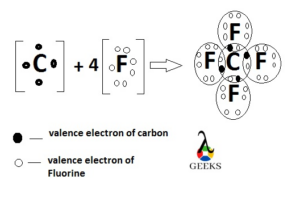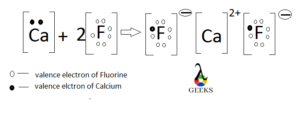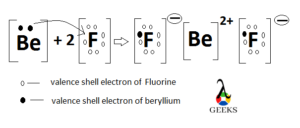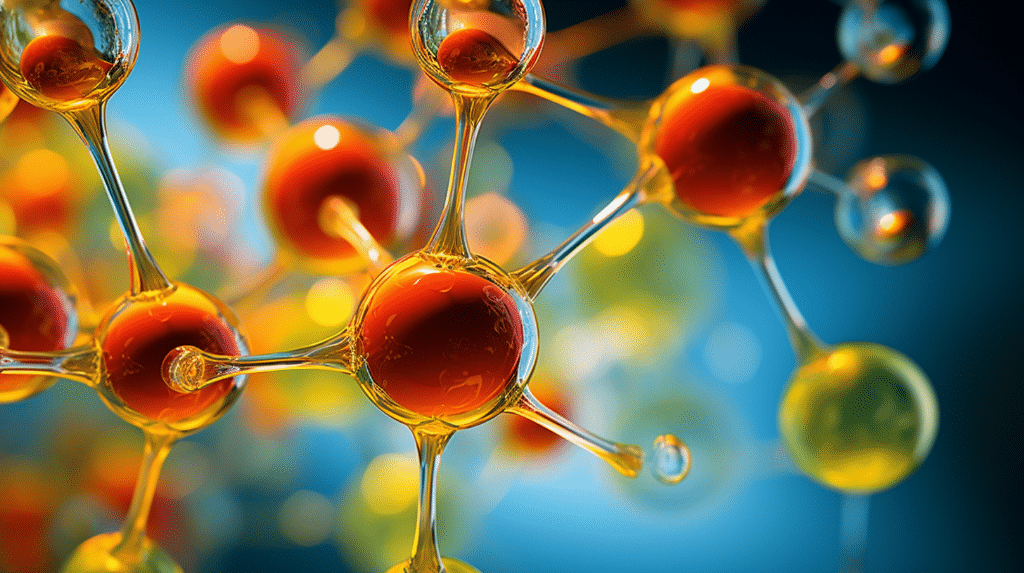Lewis dot structure gives information about outermost shell electrons of atom. This article is discussing about the fluorine lewis dot structure involving in bonding with different elements.
The representation of atomic symbol surrounded by outermost shell electrons is called lewis dot structure of that atom. To draw fluorine lewis dot structure, we have to count valence electrons of Fluorine that is 7 which are written as dots around “F” . So Fluorine needs one electron to fill the Octet structure. It accept electron from donor atom to gain noble gas like stability.
Fluorine ion lewis dot structure
Fluorine is ‘group 17’ element in Periodic table. Neutral Fluorine has seven valence shell electrons. By accepting one electron it becomes fluoride ion.
Fluorine has seven valence electrons among these two electrons present in 2s electronic shell and five electrons are in 2p electronic shell. It has one less electron respect to nearest Noble Gas. So it accepts one electron and form fluoride ion.
Fluoride ion valence shell electronic configuration is like nearest Noble gas, Neon.
To draw the lewis dot structure first have to write symbol of Fluorine atom. All valence shell electrons are drawn as dots. This whole should be written inside a bracket. The negative charge gained by Fluorine should be written to right outside of bracket.

Fluorine atom lewis dot structure
Fluorine (‘group 17’ element) has total nine electrons with electronic configuration:1s2 2s2 2p5.
In outermost shell of Fluorine, it has seven electrons. Two electrons are in 2s electronic shell and five electrons are in 2p electronic shell. Which are shown in fluorine lewis dot structure as dots.
In the lewis structure, symbol of Fluorine (F) is written surrounded by seven dots which represents the valence electrons, inside a bracket.

Fluorine gas lewis dot structure
Lewis dot structure of Fluorine gas help us to understand the arrangement of valence electrons that form bonding between two Fluorine atom.
To draw the lewis dot structure of Fluorine gas first have to count all outermost shell electrons in the gas molecule. This number will be 14 as they individually have seven valence electrons.
They have to satisfy the Octet rule that each of them must have 8 electrons in valence shell for molecule formation. For this they have to share electron with each other. This result in the formation of bonding represented as a single line.
For sharing electrons the bond will be covalent bond which keeps the two Fluorine atoms together.

Aluminum and Fluorine lewis dot structure
Aluminum is a ‘group 13’ metal element (electronic configuration: 1s2 2s2 2p6 3s2 3p1) and Fluorine is a ‘group 17’ halogen non metal element (electronic configuration: 1s2 2s2 2p5) in Periodic table.
We must have to see the valence electronic configuration of both to draw the lewis dot structure of the molecule. Valence shell electronic configuration of Aluminum: 3s2 3p1. Valence shell electronic configuration of Fluorine: 2s2 2p5.
So total outer most shell electrons will be ten. According to the octet rule the atoms always prefer half or full filled shell electronic configuration for better stability.
Considering this Aluminum prefer to donate that three 3p shell electrons and become a positive ion. These three electrons are accepted by three Fluorine atoms as Fluorine has one less electron from octet like structure. So Fluorine becomes negative ion. Now the valence shell electronic configuration looks like nearest Noble gas, Neon. By this electron transition ionic bond formed between these four atoms.
In the lewis dot structure less electronegative aluminum is drawn in center surrounded by Fluoride ions. Central atom has no lone pair of electrons. Fluoride ion has three pairs of nonbonding electrons.

Carbon and Fluorine lewis dot structure
Carbon is a ‘group 14’ element having electronic configuration: 1s2 2s2 2p2. Fluorine is a ‘group 17’ element having electronic configuration: 1s2 2s2 2p5 in Periodic table.
To draw lewis dot structure we need help from outer most shell electronic configuration of the atoms. Valence shell electronic configuration of Carbon: 2s2 2p2. Valence shell electronic configuration of Fluorine: 2s2 2p5.
To get stable octet electronic structure Fluorine have to accept one electron. This electron is shared by Carbon. sharing these four valence electrons Carbon becomes stable in electronic configuration. Hence four Fluorine atoms can make coordination with Carbon.
Total 32 valence electrons are distributed around five centers. Among these, eight electrons (four pair of electrons) take part in four Carbon-Fluorine bond formations. Remaining 24 electrons behaves as non bonding electron pair (lone pair).As total four Fluorine atom present, there will be 3 lone pairs around each atom.
To draw the lewis dot structure we have to place least electronegative atom at the center and four Fluorine atoms around it. They are connected by a circle which represents bonding electron pairs. Three pairs of dots are drawn around each Fluorine atom which symbolizes the lone pairs.

Magnesium and fluorine lewis dot structure
Magnesium is a ‘group 2’ element. It has twelve electrons in electronic orbital with electronic configuration: 1s2 2s2 2p6 3s2. Being a ‘group 17’ element Fluorine’s electronic configuration: 1s2 2s2 2p5.
To draw the electron dot structure we consider only valence electrons that take part in bonding in the molecule. Valence shell electronic configuration of Magnesium: 3s2. Valence shell electronic configuration of Fluorine: 2s2 2p5.
Magnesium has two outermost shell electrons that have to be transferred. That makes Magnesium to gain stable Noble gas like structure. These two valence electrons are received by two Fluorine atoms. Hence strong ionic bond is formed through electron transformation.
Atomic symbol of less electronegative magnesium is written in the middle. The negative charge of Fluoride ion is written to the right upper side of bracket.

Calcium and Fluorine lewis dot structure
To represent the electron dot structure of molecule containing Calcium and Fluorine we have to count outer most shell electrons.
Calcium is a ‘group 2’ element so has two valence shell electrons that are in 4s shell. Being a’ group 17’ element, Fluorine has seven valence shell electrons that are in the 2s and 2p shell. Every atom tends to maintain half or fulfill electronic configuration to be stable.
Calcium donates its outer most electrons and become a positive ion. The electrons are received by two Fluorine atoms and become fluoride ion. The opposite charged ion are held together by strong ionic bonding.
Symbol of less electronegative Calcium is written in the middle and fluoride ions are surrounded around it. Central atom has no lone pair. The valence electrons of Fluorine that not contribute in bonding remain as lone pairs.

Potassium and Fluorine lewis dot structure
Lewis dot structure of Potassium fluoride gives us the idea about valence shell electronic configurations of atoms involving.
Potassium is a ‘group 1’ element. It has only one electron in outer most electronic shell that is in 4s shell (valence electron). From electronic configuration we know Fluorine (‘group 17’ element) has seven valence electrons which are in 2s and 2p shells.
Every atom trends to have octet fill up electronic configuration. To obtain that stability Potassium donates that valence electron and become positive ion. Fluorine accepts that electron and form Fluoride ion. The remaining valence electrons of Fluoride ion shown as dots. These represents as lone pairs.

Lithium fluoride lewis dot structure
Lithium fluoride lewis dot structure gives us information about the valence shell electrons of involving atoms.
Lithium is a ‘group 1’ element and Fluorine is ‘group 17’ element in periodic table . Electronic configuration of Lithium: 1s2 2s1. Electronic configuration of Fluorine: 1s2 2s2 2p5.
Lithium transfers the one electron of 2s electronic shell, forms a positive ion. This electron is accepted by Fluorine atom and make Fluoride ion so that Fluorine gain stable octet fill up electronic structure. These two oppositely charged ion results Lithium fluoride molecule. The remaining valence electrons of Fluorine stay as lone pairs represented as dots in lewis dot structure.

Beryllium and Fluorine lewis dot structure
To construct Beryllium and Fluorine lewis dot structure first we have to count valence electrons of both atoms.
Beryllium is a ‘group 2’ element and Fluorine is a ‘group 17’ element in periodic table. Electronic configuration of Beryllium: 1s2 2s2. Electronic configuration of Fluorine: 1s2 2s2 2p5.
Beryllium trends to donate the two valence shell electrons, forming a positive ion. These two electrons are accepted by two Fluorine atoms and make Fluoride ions.
These oppositely charged ions form molecule through ionic bonding. In the molecule Beryllium is central atom and it has no lone pair. Fluoride ion has three pairs of unshared electrons represented as dots in lewis dot structure.

Read more about-CH2CL2 Lewis Structure Why,How,When And Detailed Facts
Also, please click to know about Gallium Lewis Dot Structure.



